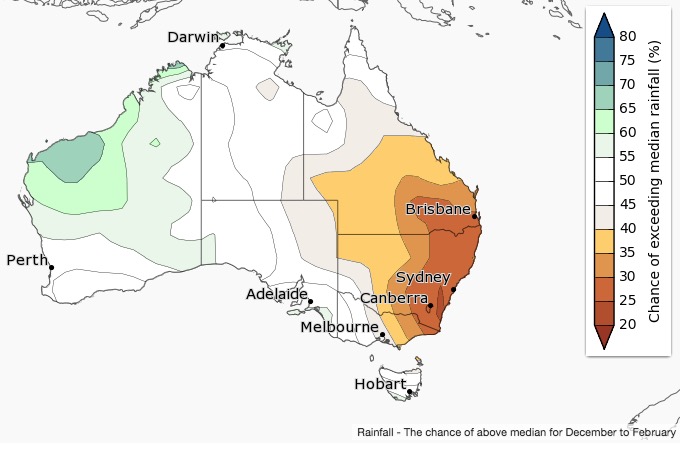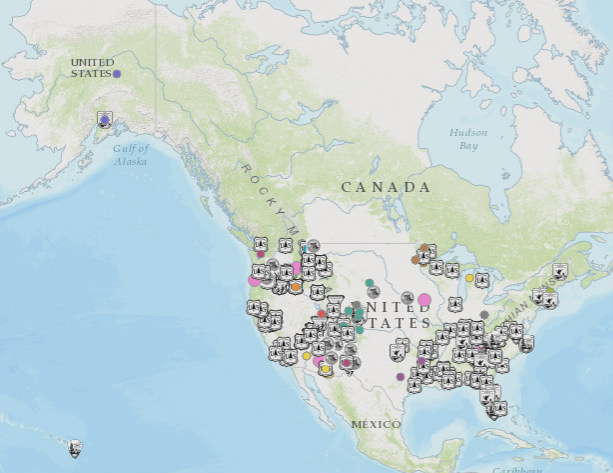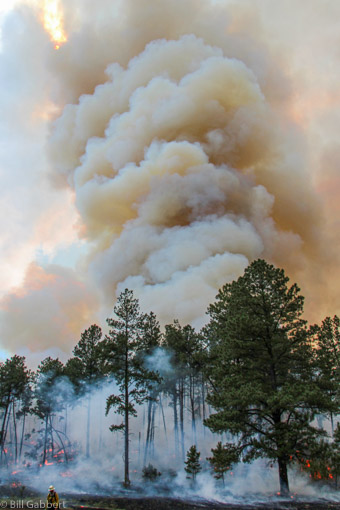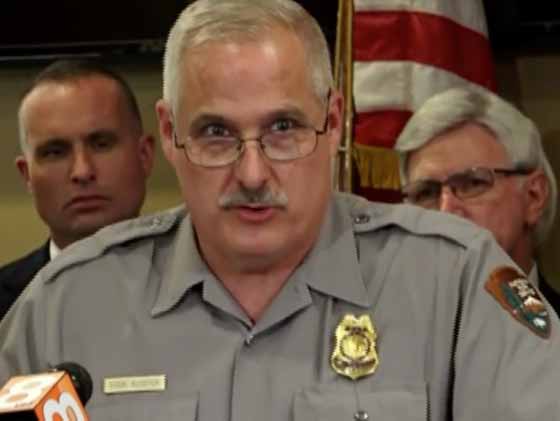Above: The chance of above median maximum temperature in Australia, December through February.
The Australian Bureau of Meteorology is predicting that the eastern half of their country will experience a summer that is warmer and dryer than normal. That season is just beginning; their highest temperatures usually occur in January and February, but Tuesday produced the hottest December day in Sydney in the last 11 years, hitting 39.2C (102.5F) at Sydney Airport.

Below is an excerpt from an article at Australia’s ABC News about how Tuesday’s weather could affect wildfires:
Fire danger warnings are in place across a large part of Australia, with hot temperatures and windy weather expected, the Bureau of Meteorology (BOM) says. Fire authorities are on alert in the south-eastern states, with total fire bans in place in regions of South Australia, New South Wales and Victoria, and a high danger in Tasmania.
Temperatures were forecast to reach the mid-30s in the southern states, with a maximum of 36C in Sydney and Adelaide, 34C in Melbourne and 33C in Canberra.
In Darwin, the maximum expected temperature was 34C, 29C in Hobart. Perth’s forecast top was a cooler 26C and Brisbane 29C.
High temperatures in several capital cities at the same time is “a bit different”, senior BOM meteorologist Claire Yeo said.
“Those hot temperatures ahead of that wind change [are] increasing the fire dangers into that very, very high to severe range,” Ms Yeo said
“But there is also an added impact that we don’t necessarily or aren’t necessarily able to reflect in the fire danger rating, and that’s the way the atmosphere behaves in these kinds of conditions.
“Today is a classic example where if a fire was to start in your particular area, the atmosphere is primed for [it]. If a smoke plume develops over that fire, it can get to quite an extensive height … and we see very erratic fire conditions and fire behaviour in that kind of atmospheric condition.”
Ms Yeo said more frequent fire danger ratings were expected in coming days.
.@NSWRFS Very Large Air Tanker assists over the Oaklands fire ground this afternoon. Fire under control at 4000ha. Pic:Splitters Creek RFB. pic.twitter.com/xh56aIEiMW
— Benjamin Shuhyta (@shuhyta) December 13, 2016











